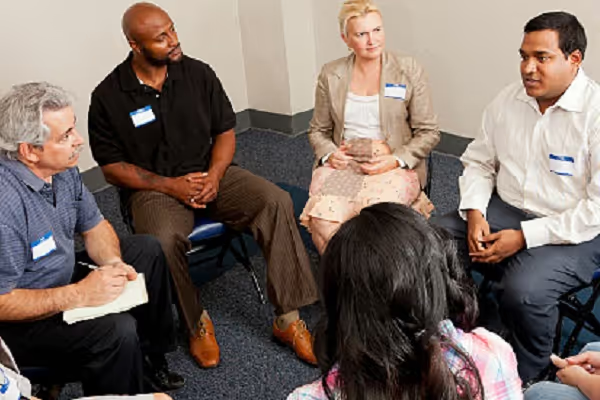September is Suicide Prevention Month and there has been a lot of media attention around veteran suicide with the 22 pushup challenge. While raising awareness around the issue of veteran suicide is a good start, communities must start coming together to help end this epidemic.
Here are five ways you go beyond raising awareness and help prevent veteran suicide:
During the month of September, the Department of Veteran Affairs (VA) has launched a campaign to prevent suicide with one simple act: Be There. The Be There campaign doesn’t require much beyond helping someone feel included and supported. Check out their campaign and see how taking small, thoughtful actions can go a long way to show someone you care.
Encourage a Veteran to Enroll in VA Healthcare
The Office of Suicide Prevention recently released its report on suicide and found that an average of 20 veterans a day die by suicide, but only 6 of the 20 estimated daily victims were users of VA healthcare services. Don’t be afraid to ask you friend or loved one if they are enrolled in VA healthcare. If they served on Active Duty and separated under conditions other than dishonorable, they may qualify for VA healthcare. Encourage them to them to enroll in VA healthcare services on the new VA website: https://www.vets.gov/healthcare/apply.
Let a Veteran Know About the Veterans Crisis Line
The 24/7 Veterans Crisis Line provides immediate access to mental health crisis intervention and support. Veterans can call the National Suicide Prevention Hotline number, 1-800-273-TALK (8255) and then “Press 1” to reach highly skilled responders trained in suicide prevention and crisis intervention. VCL also includes a texting option by messaging 838255 as well as a confidential web chat. More information can be found at https://www.veteranscrisisline.net.
Learn More about Serving Veterans in the Community
At Swords to Plowshares, we share our subject matter expertise on a range of mental health and caregiving topics to help civilians’ better serve veterans. Recent topics include suicide prevention and access to care, veterans with less than honorable discharges, needs of aging veterans, LGBTQ, and women veterans. All of our Combat to Community® trainings are mental health professional accredited and can be adapted to specific needs for other community professionals. For further information about our Combat to Community® training, email us at c2c@stp-sf.org or call (415) 655-7253.
Get Active in the Community
Building community and relationships are important aspects of maintaining one’s mental and physical health. It is far easier to get healthy and stay healthy when you can incorporate getting outside and being active. There are many great groups in your communities looking for members and volunteers that are both veterans and civilians alike. Groups like Team RWB, an organization that connects people through athletic and social events, Team Rubicon, a group that provides disaster relief to those affected by natural disasters both domestically and abroad, and The Mission Continues, who help empower people to engage with their communities through service projects in their communities, all welcome new members and have a wide variety of activities that bridge the military-civilian divide, as well as provide a sense of community and camaraderie.
Tackling the issue of veteran suicide requires robust resources and support networks. Veterans and non-veterans can play a role in saving lives by better understanding the issue and learning about the resources to prevent suicide. The Be There Campaign provides guidance for veterans and veteran supporters. Encourage veterans to enroll in VA Healthcare to have access to veteran-centric care providers. The Veterans Crisis Line is available to support a veteran dealing with crisis. Professionals can receive training through the Combat to Community curricula to be informed on veteran and military culture. We encourage veterans and supporters to be active in the community with social groups. All of these solutions are meant to direct veterans to the resources they need in times of crisis and reintegrate our veterans into a supportive community.


.png)
.png)


